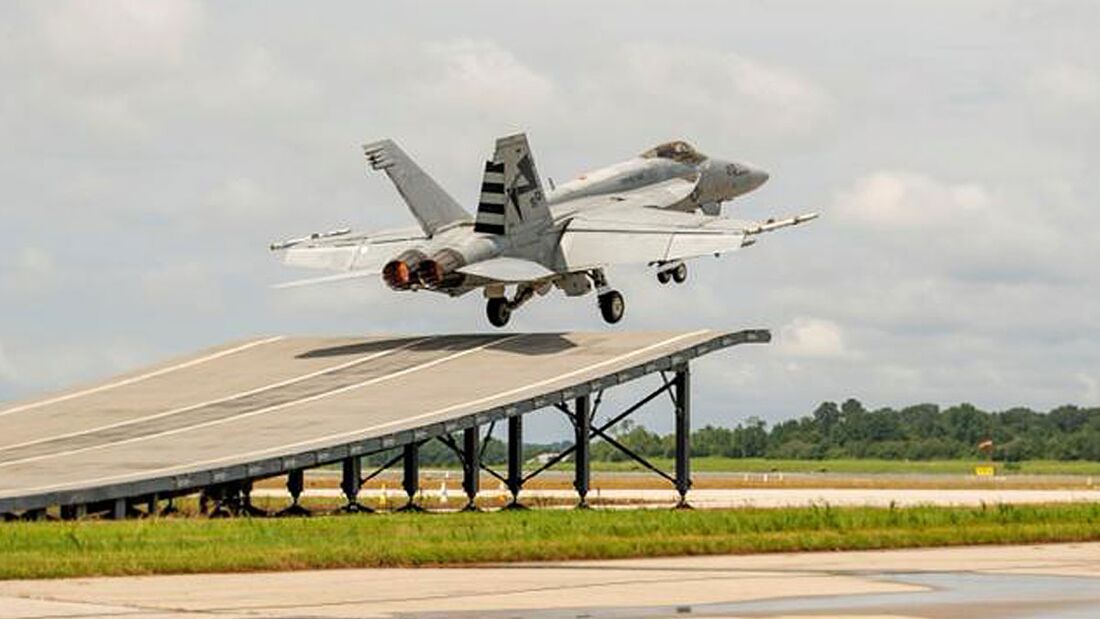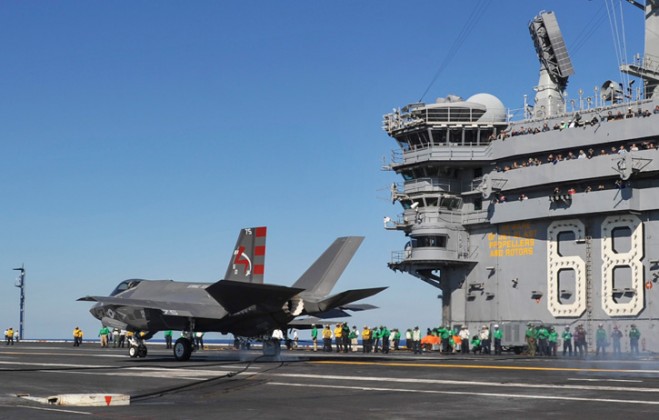

Additionally, another operational deficiency was beginning to develop. The latest lot of the F/A-18C/D has grown to be far more capable (night attack, precision strike, low observable technologies, etc.) than the original F/A-18A/B however, by 1991, it was becoming clear that avionics cooling, electrical, and space constraints would begin to limit future growth. Throughout its service, annual upgrades to F/A-18 weapon systems, sensors, etc.

Reliability and ease of maintenance were emphasized in its design, and F/A-18s have consistently flown three times more hours without failure than other Navy tactical aircraft, while requiring half the maintenance time. It quickly became the battle group commander's mainstay because of its capability, versatility and availability. The original F/A-18A (single seat) and F/A-18B (dual seat) became operational in 1983 replacing Navy and Marine Corps F-4s and A-7s. For the most part, these occurred in the basic aircraft hardware rather than in the digital electronic systems. While much attention was focused on development problems, these were largely typical of those in any new program, with their resolution being part of the development process. Making the first flight in November 1978, the F/A-18 and its two-place derivative underwent most of their development testing at the Naval Air Test Center under the new single-site testing concept. Minimum changes were made to incorporate the second cockpit, with the two-seat airplanes retaining the ability to perform combat missions. Coupled with cathode ray tubes for cockpit displays and appropriate controls based on thorough pilot evaluations in simulators, a single airplane and subsystems configuration for both missions was evolvedĭuring development, two-place trainer versions were added, to be built in limited numbers as TF/A-18s, intermingled with the basic F/As.
F18 CARRIER LANDING MISSION ESCORTE FULL
To meet the single-place fighter and attack mission capability, full use was made of new technology in digital computers. However, the inadequacy is managed well with organic and joint tanking assets.į/A-18A/B Hornet While the general configuration of the YF-17 was retained, the F-18 became a completely new airplane. The only F/A-18 characteristic found to be marginally adequate by battle group commanders, outside experts, and even the men who fly the Hornet, is its range when flown on certain strike mission profiles. The F/A-18 has proven to be an ideal component of the carrier based tactical aviation equation over its years of operational experience.
F18 CARRIER LANDING MISSION ESCORTE UPGRADE
The benefit of this design feature is that the F/A-18 has been relatively easy to upgrade on a regular, affordable basis. In addition, the F/A-18 was also the Navy's first tactical jet aircraft to incorporate a digital, MUX bus architecture for the entire system's avionics suite. The power to maintain evasive action is what many pilots consider the Hornet's finest trait. A solid thrust-to-weight ratio and superior turn characteristics combined with energy sustainability, enable the F/A-18 to hold its own against any adversary. At the same time, this system provides exceptional maneuverability and allows the pilot to concentrate on operating the weapons system. The F/A-18 has a digital control-by-wire flight control system which provides excellent handling qualities,and allows pilots to learn to fly the airplane with relative ease. The F/A-18 Hornet replaced the F-4 Phantom II fighter and A-7 Corsair II light attack jet, and also replaced the A-6 Intruder as these aircraft were retired during the 1990s. The F/A-18 fills a variety of roles: air superiority, fighter escort, suppression of enemy air defenses, reconnaissance, forward air control, close and deep air support, and day and night strike missions.

The F/A-18 "Hornet" is a single- and two-seat, twin engine, multi-mission fighter/attack aircraft that can operate from either aircraft carriers or land bases. 19-Present DreamBIG “TOPGUN” Experience Nose Section is currently operated as a Mobile Aviation Museum by DreamBIG Entertainment


 0 kommentar(er)
0 kommentar(er)
